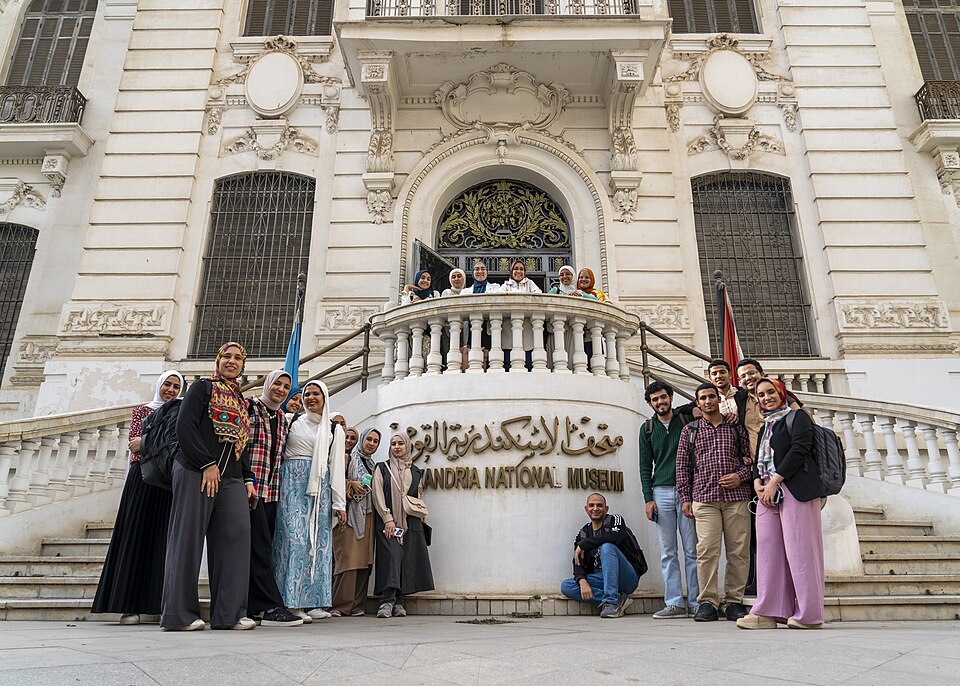In 2024, Egypt Wikimedians User Group began planning for a big GLAM project in Egypt. There may have been limited GLAM activities in the past years, but they were very few and did not meet the desired level in terms of size and results. It was unfortunate that our group was late in GLAM activity, especially since Egypt is a country with a rich history and ancient civilizations, and has a huge amount of heritages and cultural content. Therefore, the group had already begun planning for the activity last year, according to the famous saying (better late than never), as the plan includes 3 museums, 2 libraries, and 2 archives.
Over the past few months, the group organized three significant museum visits—Luxor Museum (February 2), Alexandria National Museum (April 24), and the Museum of Islamic Art (May 10) to document and upload high-quality images and information to Commons, Wikipedia and Wikisource.

Luxor Museum: Capturing Ancient Egyptian Treasures
The first stop in this series was the Luxor Museum, home to an exceptional collection of artifacts from ancient Thebes. During their visit to Luxor, members of the Egypt Wikimedians User Group organized a photo trip to the city’s museum. They photographed and documented key exhibits, including statues of pharaohs, tools, jewelry, and relics. The group ensured that students, researchers, and history enthusiasts worldwide can access and utilize these resources by uploading these images under open licenses. This initiative aligns with Wikipedia’s mission of free knowledge dissemination while promoting Luxor’s cultural significance. (Read more about the Luxor Museum phototrip)



Alexandria National Museum: Showcasing Hellenistic and Maritime History
Next stop was the Alexandria National Museum, which houses artifacts from Egypt’s Greco-Roman, Coptic, and Islamic periods. The Group’s members focused on photographing rare pieces, such as Alexandria’s underwater discoveries, Hellenistic sculptures, and medieval manuscripts. These contributions enrich Wikipedia articles related to Mediterranean history and archaeology, ensuring that Alexandria’s multicultural heritage is well-represented online. This event came after the closing session of the WikiMed and Wikidata workshops. (Read more about the photo trip)



Museum of Islamic Art: Highlighting Arts in Medieval Egypt
The final visit was to Cairo’s Museum of Islamic Art, one of the world’s largest repositories of Islamic artifacts. Members photographed calligraphic works, astrolabes, textiles, and architectural fragments, spanning over a millennium of Islamic civilization. These uploads support Wikipedia’s coverage of Islamic art, science, and history, bridging knowledge gaps for researchers globally. (Read more about the Museum of Islamic Art visit)



Through these GLAM activities, the Egypt Wikimedians User Group has demonstrated a strong commitment to preserving and sharing Egypt’s cultural heritage. By collaborating with museums and leveraging open-access platforms, they ensure that historical treasures remain accessible to future generations. Such initiatives not only enhance global knowledge equity but also reinforce the importance of digital preservation in the modern age.

Can you help us translate this article?
In order for this article to reach as many people as possible we would like your help. Can you translate this article to get the message out?
Start translation